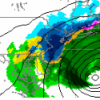Where does the Equilibrium Sensitivity lie for a Doubling of CO2?
How Much Warming Would you expect for a doubling of CO2?
17 members have voted
-
1. The sensitivity of CO2 is...
-
Over 6 Degrees C0
-
4.5-6 Degrees C
-
2.5-4.5 Degrees C
-
1.2-2.5 Degrees C
-
The sensitivity of CO2 is close to a Blackbody sensitivity
-
The sensitivity of CO2 is less than the Blackbody Sensitivity (One Degree C)
-
The sensitivity is Zero
-
-
Recently Browsing 0 members
- No registered users viewing this page.


Recommended Posts
Archived
This topic is now archived and is closed to further replies.